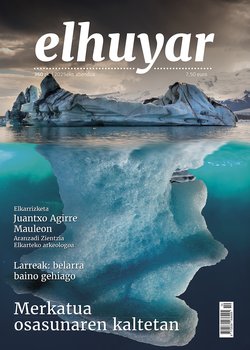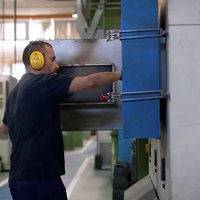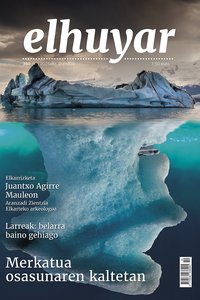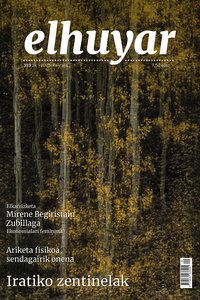Also in the wine sector, tackling climate change
In the centers of the BRTA Alliance, projects are being developed to mitigate or respond to the climate emergency from different aspects. An example of this is the Envirodigital tool developed at AZTI, which not only measures the environmental footprint of the products produced by food companies, but also provides the keys to mitigate the impact. On the other hand, the BRTA’s NEIKER centre is working on strategies to adapt the vineyards to the new climate change situation. Indeed, adaptation to climate change and climate change mitigation measures are different options, but both will be necessary to respond to current and future realities.
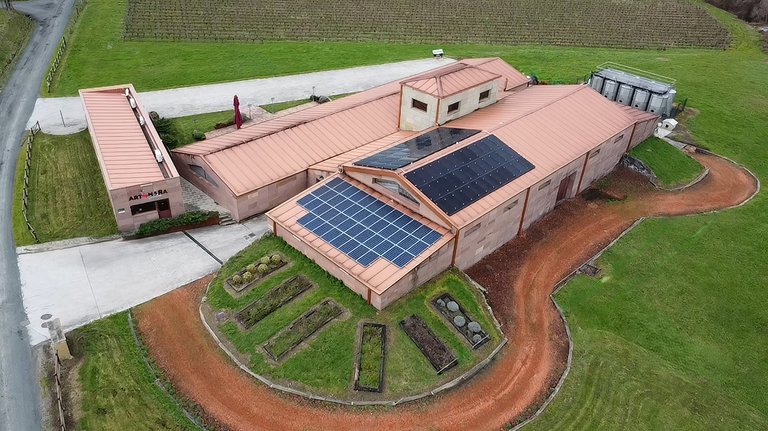
The neighborhood of Artomaña, in Amurrio (Aiaraldea), is located on a wide plain surrounded by mountains. The vineyards of the txakoli of the same name cover 21 hectares of land. Recently, they have measured the environmental footprint of their txakoli production process using AZTI’s Envirodigital tool and are very satisfied with the result. This is confirmed by Kerman Alava Guerrero of the Artomaña txakoli: “AZTI proposed to us to participate in this project to know if we were doing things well in environmental terms or not, and having such a good result has been a good surprise.”
Alava highlights not only the result, but also the ease. In fact, they only need to include some data: the use of water, electricity, what kind of components they need to produce their products, what kind of waste they generate...
According to the results provided by the Envirodigital tool, one or another Enviroscore label is applied to food business products. This label indicates the impact of the product on the environment, distinguishing five levels. The product labelled A represents very little damage, while the level of E means that this product has a significant impact on the environment.
When establishing the label, they take into account the entire production chain, looking at 16 indicators in each link and measuring the impact of each of them. Thus, climate change is one of the 16 indicators whose impact or relevance is 22%, as determined by the researcher of AZTI, Saiba Ramos Fernández. Knowing this helps to make decisions: “For example, if they see that the ship is the most influential aspect of climate change, they can do some theoretical tests to choose another material with a lower impact.”
This is exactly what they have seen at the Artomaña Txakoli winery, where changing the bottle of sparkling txakoli would reduce the company’s environmental footprint. Today’s bottles are thick and heavy, so they require more raw material in the production process and produce more greenhouse gases during manufacturing and transportation.
Meanwhile, in the vineyards of Arabar Rioja, different strategies are being tested to adapt to the situation that has led to climate change. Spring, for example, has always been a bit dangerous for vineyards, and the situation has worsened due to climate change. In order to cope with the risks, the researchers of the NEIKER research centre are therefore carrying out tests.
Pruning is one of the strategies. In the words of the researcher Ana Aizpurua Insausti, delaying pruning, they try to delay the cycle of the plant: “This is how we manage to protect the plant from frost, for example, because it is very sensitive in the first stages. By pruning later, the plant also moves a little later, allowing this stretch of spring ice to be saved to some extent.”
In a section of Bastida, for example, from the beginning of November to the end of April, seven prunes have been carried out. Periodically, they come to the vineyard and collect data on the development of each plant. Depending on their appearance, they give each germ a value and compare them to see if there is a difference between the pruning periods.
As explained by Aizpurua, there are differences: “These last pruning in April, for example, give less degrees at harvest time and a bit more acidity.” And, at some point, that's what the wineries are looking for. “We’ve also seen that it doesn’t lose in terms of production.”
It is impossible to prune all the vineyards located in Rioja Arabar at the same time. In fact, there are more than 14,500 vineyards planted, spread over 13,100 hectares. But delaying pruning can be a good measure for the departments with the highest risk of frost.
After all, there is no one-size-fits-all climate emergency response strategy, but they are all worthy of consideration.
Buletina
Bidali zure helbide elektronikoa eta jaso asteroko buletina zure sarrera-ontzian


